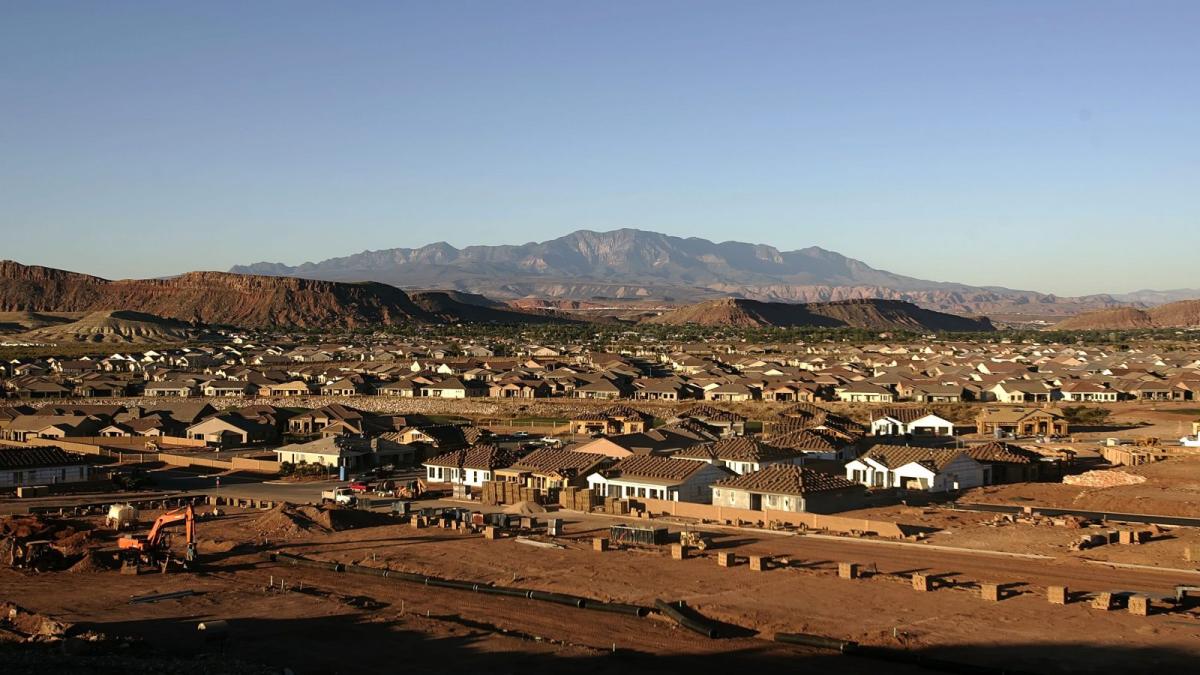This story was originally published by CityLab and is reproduced here as part of the Climate Desk collaboration.
When Latter-day Saint migrants arrived in Utah in 1847, a verse in Isaiah served as consolation to them in the desiccated landscape: “The wilderness and the solitary place shall be glad for them; and the desert shall rejoice, and blossom as the rose.”
Lately, the desert has blossomed nowhere more than the St. George area, in the state’s southern reaches. The city is a picturesque outpost, with red-rock desert framing bright green lawns and golf courses, all built around the stark white Mormon temple in the center of town.
Brigham Young’s adherents came here to grow crops, primarily cotton — hence its reputation as Utah’s Dixie. Today, that ceaseless sunshine is luring so many tourists, retirees, and students that St. George has become the fastest-growing metropolitan area in the country. According to Census Bureau data released in March, the metro, home to 165,000 people, grew 4 percent between 2016 and 2017.
“Six million people visit the area every year. As people visit here, some of them decide to stay,” St. George Mayor Jon Pike said. Th... Read more
